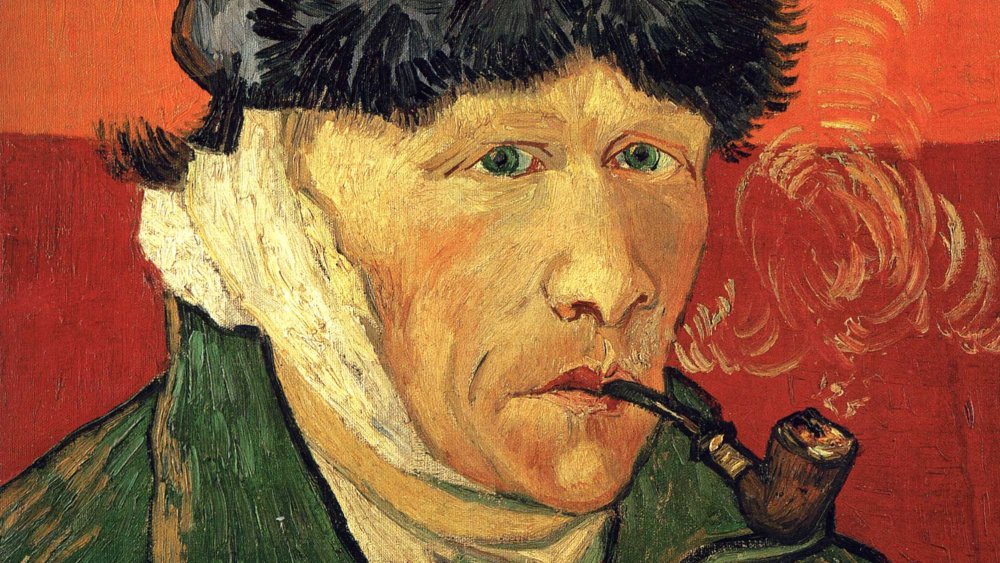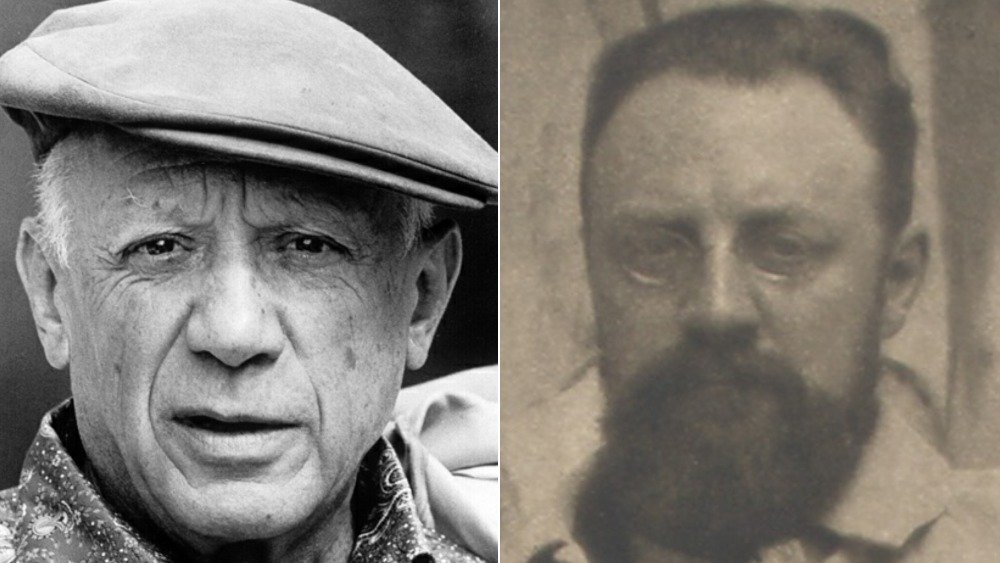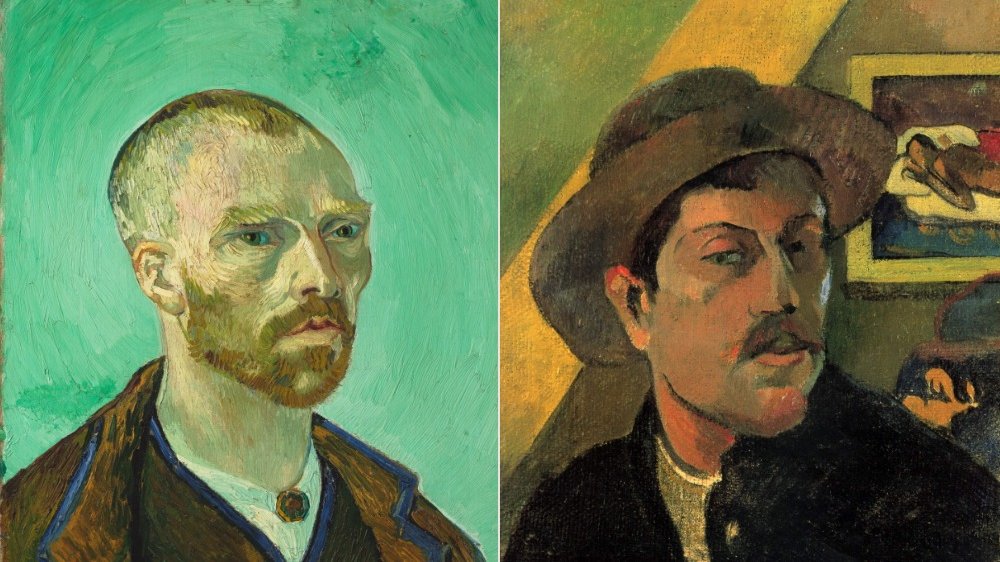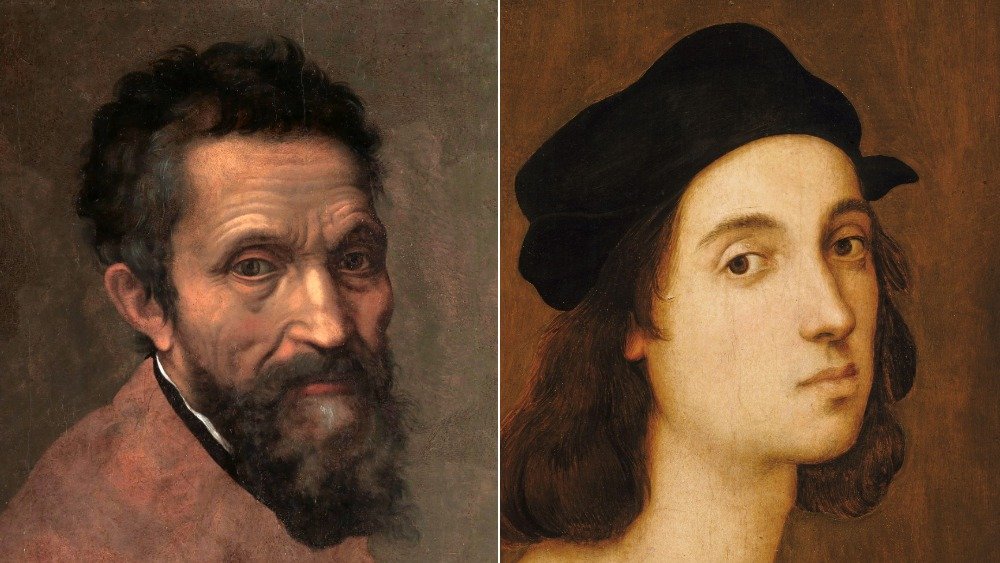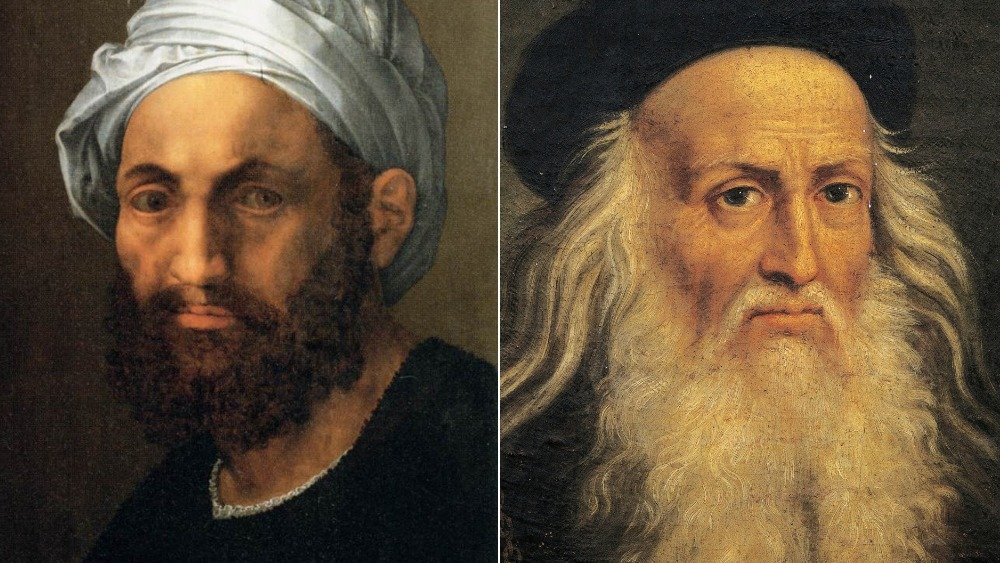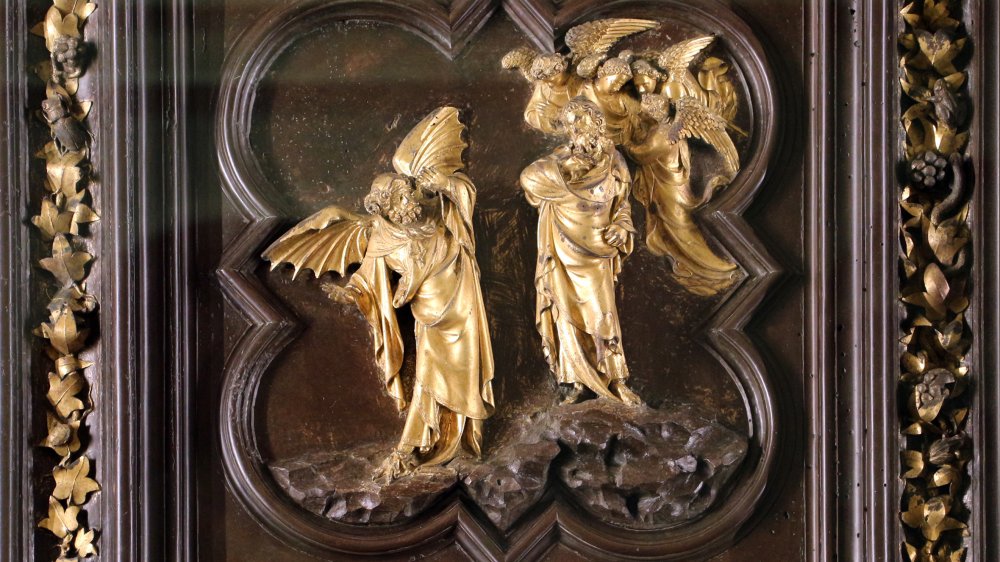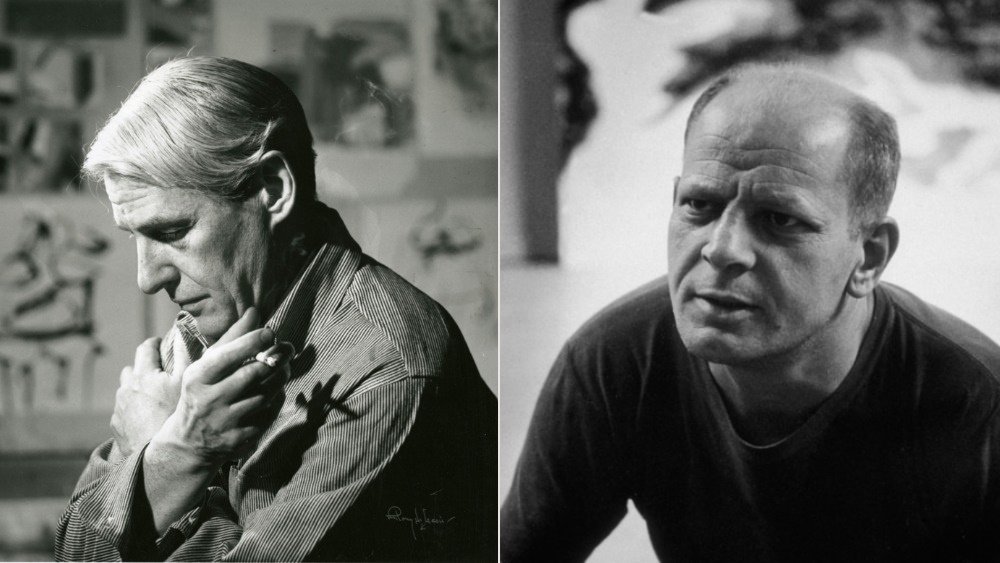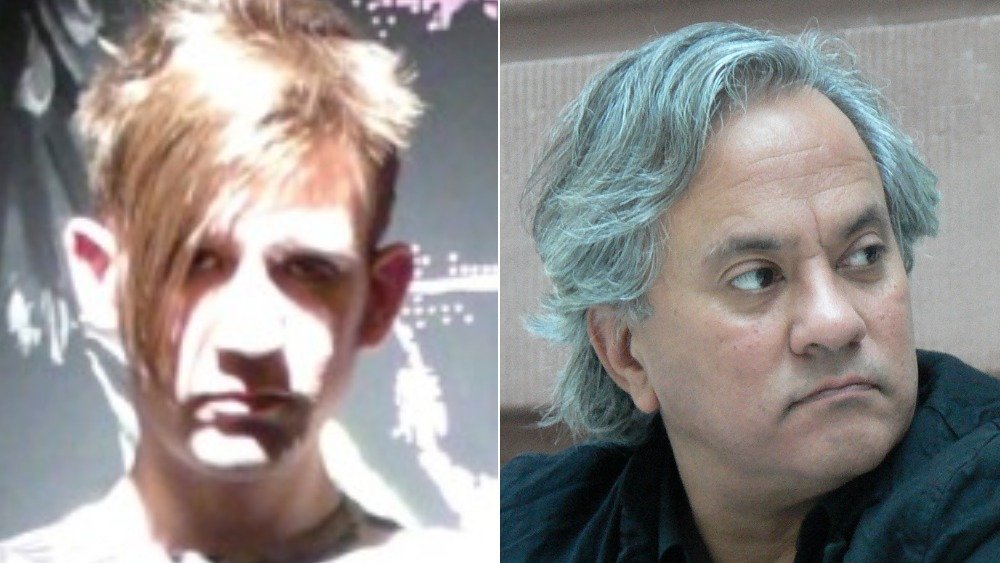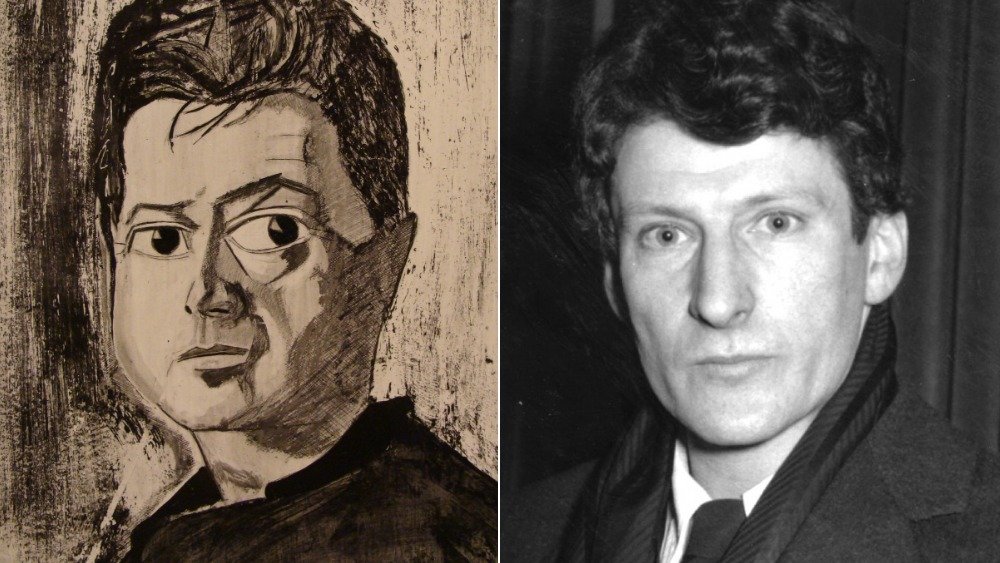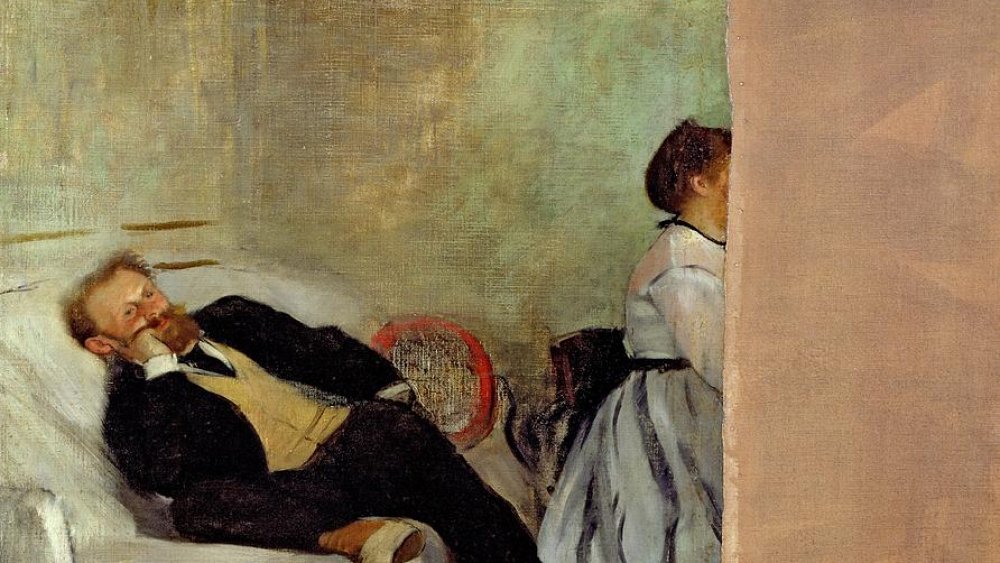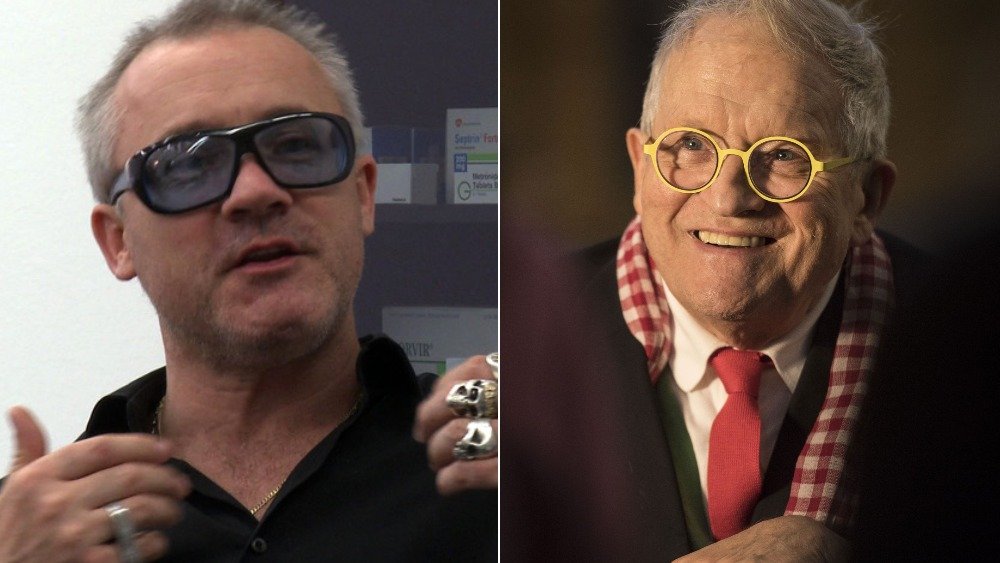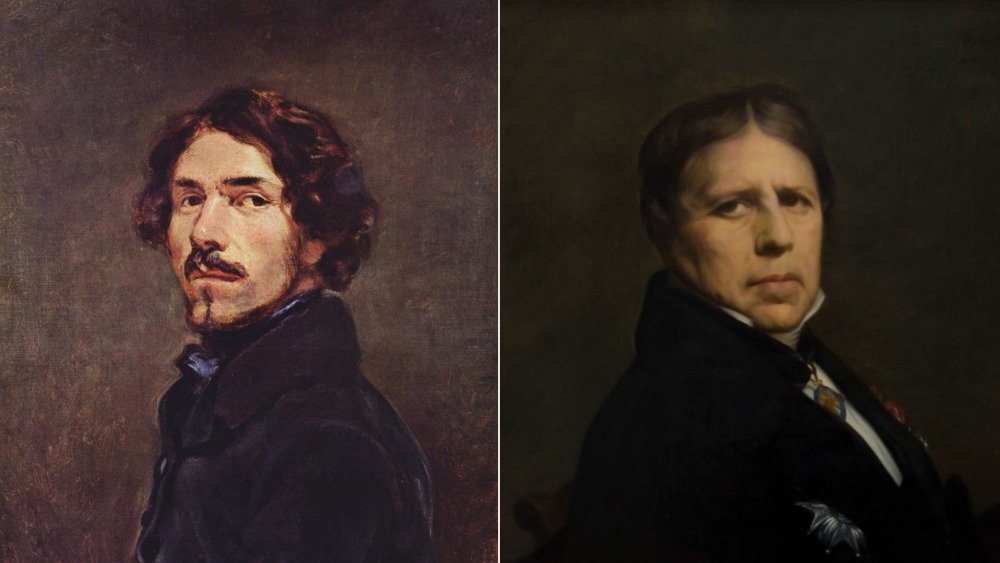Art Rivalries That Took Things Too Far
Rivalries are everywhere. You've surely been part of one at least a few times in your life, whether it was an elementary school showdown over playground equipment, a teenage spat with your frenemy, or workaday professional jealousy. Some friendly competition is healthy, says the journal Anatomical Sciences Education. It can encourage creative innovation and push people to achieve when they would otherwise be wasting time.
Then again, there are some people who take it way too far. With the high tensions that are inherent to the art world, those turbocharged rivalries can make some serious waves. Someone criticizes another's art, which can very quickly be taken as a criticism of their whole ethos, their creativity, and, indeed, their very way of existing, and it's all over.
Now, sometimes people behave like reasonable adults, but, alas, not all competitive relationships rise above the petty fray. In fact, some pretty big names in art history have succumbed to the temptation. What's certain about these art rivalries is that they were so intense that they've become legend, many decades and even centuries after the fact.
Picasso and Matisse were frenemies
Sometimes, art rivalries are very, very real. Artists work hard, move in small circles, and can be subject to insecurity and jealousy just like anyone. Then again, those art circles are also full of critics, commentators, and old-fashioned gossips who could stand to make hay out of an imagined competition.
According to Slate, the supposedly legendary rivalry between Pablo Picasso and Henri Matisse is the result of some masterful pot-stirring by none other than Gertrude Stein. Along with her older brother, Leo, Gertrude had begun a Paris-based salon where famous creatives of the day gathered to share their thoughts. Leo directly told Picasso and then Matisse that the other had just sold a significant work to a significant art dealer. The poet and art critic Apollinaire then took things even further. When dealer M. Paul Guillame organized a joint show between Matisse and Picasso, he reached out for commentary. As Apollinaire was quoted in Matisse and Picasso, he said that Guillame took "the two most famous representatives of the two grand opposing tendencies in great contemporary art" and pitted them against each other. So canny! And also, from Matisse and Picasso's perspective, maybe not entirely true.
This isn't to say that there wasn't competition between them. Toward the end of his career, reports Smithsonian Magazine, Picasso said that "No one has ever looked at Matisse's painting more carefully than I; and no one has looked at mine more carefully than he."
Van Gogh and Gauguin were horrible roommates
During his lifetime, Vincent Van Gogh struggled to receive any attention for his art, but it wasn't for a lack of trying. Van Gogh created nearly 900 pieces in a bit under a decade, says Biography, a staggering pace that's rarely matched by artists with entire lifetimes to paint. He also worked hard to build connections with other artists and create an artistic community. One attempted relationship went so wrong, however, that it may have resulted in bodily harm.
It all happened in 1888. Van Gogh had set up what he hoped would be the beginnings of a collaborative art studio in Arles, France. He persuaded Paul Gauguin, a daring French artist, to join him. They spent a relatively quiet fall painting together, but then things went sour. It could be that Van Gogh's mental illness bubbled to the surface, says The New Yorker. Van Gogh was intense and artistically daring in a way that Gauguin didn't seem to grasp. Gauguin, on the other hand, was far more louche and freewheeling than his weirdo roommate. Maybe the two men simply couldn't stand each other any more.
It all culminated in a shocking episode of self-mutilation, in which Van Gogh legendarily cut off part of his own ear. Or, as The Guardian suggests, did the fencing-savvy Gauguin and his sword have anything to do with it? Either way, Gauguin soon fled Arles and never saw Van Gogh again.
Michelangelo and Raphael butted heads
Michelangelo Buonarroti is recognized as one of the supreme artists of the Renaissance. More than four centuries after his time, no one compares to this master sculptor and painter. He was also a prickly, emotional artist with complex emotions and even more complicated relationships. One challenger during Michelangelo's day was the raucous, attention-getting Raphael. According to The Art of Rivalry, this wunderkind was the darling of some serious patrons, including the same pope who had hired Michelangelo.
Things got tense while Michelangelo was painting the Sistine Chapel ceiling in the Vatican, says National Geographic. Pope Julius II, who still hadn't paid Michelangelo for another commission, had ordered him to abandon his sculptures and instead paint a fresco on the chapel ceiling. Raphael had already been commissioned to work on frescoes nearby in the pope's private chambers. Someone from Raphael's group had recommended him for this project, according to WUNC. This took Michelangelo far out of his artistic comfort zone. Could he have been set up for failure? At least now we see that his perfectionism carried Michelangelo through to greatness. At the time, though, it must have seemed incredibly daunting.
In Michelangelo and the Pope's Ceiling, we're told that the pair crossed paths around this time. Michelangelo took one look at Raphael's entourage and said, "You with your band, like a bravo." Raphael, seeing that Michelangelo was alone, as usual, replied: "And you alone, like the hangman." Clearly, no love was lost between the two.
Michelangelo and da Vinci squared off in a painting contest
In his early career, Michelangelo squared off in yet another public battle for art supremacy with Leonard da Vinci. Yes, that Leonardo da Vinci. It all came down to the Hall of the Five Hundred in Florence, Italy. Inside this grand town hall, according to The New York Times, the two artists worked on dueling murals. Both had been commissioned to create grand battle scenes, now lost beneath layers of plaster and later paintings. Still, the story of their rivalry lingers.
The issues began in 1503, says The Guardian. That's when da Vinci was commissioned to paint the Battle of Anghiari. Just a year later, Michelangelo was commissioned to depict the Battle of Cascina. The two worked practically next to each other, on the same wall in the same large room. Leonardo was already in his fifties at this point, while Michelangelo was still a bit of a wunderkind just finishing up his twenties. The younger artist publicly insulted da Vinci by accusing him of impropriety, reports The Guardian. Leonardo later made catty remarks about Michelangelo's "wooden" painting style and even said that the younger man's famous sculpture of David really needed to be covered up.
Neither finished their commission. Leonardo abandoned his work, which National Geographic claims might still be beneath later renovations, and moved to France. At least da Vinci got something up on the wall. Michelangelo produced a full-sized mock-up but never put brush to plaster.
Brunelleschi and Ghiberti tussled over some doors
Lorenzo Ghiberti and Fillipo Brunelleschi grew frosty because of a pair of doors. These weren't just any doors, says Smithsonian Magazine. They were to grace the entrance to the Florence Baptistery, a church structure. This being Florence during the 15th century and the beginnings of the Italian Renaissance, no one was going to settle for simple, wooden doors. The north portal and its two doors was going to be something spectacular.
The local cloth importers guild announced a competition to design these doors. Sculptor Lorenzo Ghiberti won the competition and quickly began crowing about how he had overwhelmingly surpassed all of the other candidates, including fellow finalist Fillipo Brunelleschi. "Everyone felt I had surpassed the others in that time," he said, according to Artstor.
Well, except it's not quite so simple. In Renaissance Rivals, Rona Goffen points out that Ghiberti's design for the bronze door panels saved a ton of money on cast metal, making it all the more attractive to penny-pinching civic leaders. He also played a savvy game by making his process public, says PBS. Anyone could wander into his studio and give him feedback, allowing Ghiberti to change his work to suit the judges' tastes. The more private Brunelleschi may have lost because he wasn't as good at marketing as his artistic rival.
De Kooning and Pollock fought over reputation and romance
Many art rivalries come about thanks to insecurity. It's understandable. Art-making can be intensely personal and rife with jealousy. Or, a rivalry could be manufactured by art critics for good press. That's what some think of the tussle between Willem de Kooning and Jackson Pollock, two giants of abstract art working in the 20th century. The New York Times argues that the two were actually set against each other by Clement Greenberg and Harold Rosenberg, two New York art critics. Greenberg loved Pollock's loose, paint-flinging style. Rosenberg, meanwhile, favored de Kooning's more structured work.
That's not to say the artists themselves didn't get competitive. Pollock (right above) could seem like a force of nature, with his huge, dramatic canvases practically vibrating with energy. The established but struggling de Kooning (left above) might have felt worried about his own work. Eventually, Pollock felt the same way. As related in The Art of Rivalry, warm reception of de Kooning's work led to an embarrassing episode in which Pollock got drunk at a party and lashed out at his fellow artists.
De Kooning and Pollock also shared romantic partners in truly awkward fashion. According to Vanity Fair, Ruth Kligman, Pollock's mistress at the time of his fatal 1956 car accident, took up with de Kooning only a year after her previous lover's death. Even worse, at the funeral, de Kooning supposedly said, "It's over. I'm number one." That's never been verified, but the legend speaks to their tense relationship.
Semple and Kapoor are still fighting over colors
Who gets to use a color? This seemingly simple question lies at the heart of one of the most entertaining feuds in modern art. The color in question is a high-tech pigment called Vantablack. Invented by Surrey Nanosystems, says Vice, it absorbs almost all the light falling on an object. The result is so utterly black that it looks cartoonish, a void without any defining features.
Things really got weird when Surrey Nanosystems created a version of Vantablack that was easier to apply. It then leased its use to super-famous British sculptor Anish Kapoor (right above), reports Wired. He's the artist behind the Cloud Gate sculpture in Chicago, more popularly nicknamed "The Bean." When Kapoor secured the use of Vantablack as an artistic pigment, he got exclusive rights to do so. That's where Stuart Semple (left above) came in, according to The Guardian. Along with many other artists, he took umbrage with Kapoor's exclusive use of Vantablack.
Semple began producing his own paints, including the "pinkest pink" and a black paint that gets pretty close to the blackest black. It's available on his website, but with one catch: Anish Kapoor can't buy it. Customers have to affirm that they aren't Kapoor and aren't going to give the product to him. Kapoor retaliated by posting a photo in which his middle finger is coated in the "pinkest pink" pigment, says Creative Review. Semple recently revived the feud by banning Kapoor from his art store in London.
Bacon and Freud's friendship broke up dramatically
When Francis Bacon (left above) and Lucian Freud (right above) first met in the tight-knit art scene of 1940s London, they became fast friends. According to The Art Story, this was a particularly intense friendship. The pair saw each other almost every day, from anodyne experiences like having lunch, to gambling away their money and, for Freud, once waking up with his head in a toilet.
Like many artist friends tend to do, Freud and Bacon painted portraits of one another. They also critiqued each other's work, which may have contained the first hints of their crumbling relationship. As their careers continued, the arguments increased, finally leading to a tense estrangement.
In 1982, Bacon was recorded as saying that his former friend's latest work was simply "ridiculous," reports The Guardian. He also complained about a particular art piece owned by Freud that he never loaned to museums or galleries, even for a major retrospective show of Bacon's work. Upon hearing the tapes many years later, Freud called Bacon's work from that time "ghastly."
Degas and Manet became enemies because of a portrait
Edouard Manet and Edgar Degas were close until Degas painted a fateful portrait of his friend. But how could a simple oil painting ruin what had been a great artistic relationship?
It all began innocently enough, according to The Art of Rivalry. Degas painted a portrait of Manet and Manet's wife, Suzanne. He gave it to them and thought all was well until a fateful visit to Manet's studio. There, he saw that the canvas had been marred by a gigantic slash right through Suzanne's face. Degas asked for an explanation, but it's unclear what Manet said in response. He may have disliked the way his wife was painted. He may have been feuding with Degas already, maybe even without his friend's knowledge. It could have been merely the result of a petty, ill-considered urge after he argued with Suzanne. We'll probably never know.
We can be sure that a stunned Degas left the studio, carrying the damaged artwork back home. He meant to repaint it, even going to far as to patch the canvas, but never got around to the job. He later took down a still life by Manet that hung in his own home and returned it, says The New York Times. He included a note that said, simply: "Monsieur, I am returning your Plums." At least there's a happy conclusion. Degas and Manet patched things up in the end, succeeding where so many other artists failed.
Hirst and Hockney argued over who actually makes art
How exactly are you supposed to make art? For centuries, that's included the use of studio assistants, says ArtNet. Even big-name artists like Michelangelo and da Vinci used assistants to keep things moving. Yet, it leaves us with a thorny question: Who's the artist? David Hockney (right above) has raised this issue many times about Damien Hirst (left above), says Hyperallergic. He's claimed that Hirst has used assistants for so much of his work that their names deserve to be on the gallery label, not his.
Hirst is kind of easy pickings here. He's one of those bad boy artists who questions the whole process of the modern art world, while also fully taking part in it. Hockney, a painter and photographer who rose to prominence in the 1960s, is a bit more old-school. As The Atlantic reports, he also prefers to work mostly alone.
Hirst gained worldwide notoriety for conceptual work like 1991's The Physical Impossibility of Death in the MInd of Someone Living, in which three pieces of a shark were suspended in a formaldehyde solution. He also wears chunky glasses and a multitude of rings that scream "I am a '90s rebel artist" 20-some years after the fact. Whether or not you think that's a fair reason to target someone, Hockney doesn't care. As per The Guardian, they've even had dueling solo exhibitions to keep each others' hackles raised.
Delacroix and Ingres got snippy
Jean-Auguste-Dominique Ingres (right above) was old-school. He was into Neoclassicism, the quasi-revival of ancient Greek and Roman ideals. That included a lot of lines and defined shapes in artistic works. So, when Ingres started to run up against emerging Romanticism, he got upset. All those wild colors and feelings were simply too much! And who better personified the drama of Romanticism than rising star Eugène Delacroix (left above)?
Then again, as Art History argues, this might all be more boring marketing than actual interpersonal strife. It might also be tied to the way that the increasingly clichéd Neoclassical-versus-Romantic debate got tied up in political differences. The Romantics were generally a pretty progressive group, while Neoclassicists tended to be more conservative. We still have some pretty juicy stories stemming from the tense Delacroix-Ingres relationship, though. At one 1883 party reported on by The New York Times, Ingres stormed up to Delacroix, shouted about how "drawing is honesty!," spilled coffee on himself, and then fled. Delacroix, who probably needed a minute after Ingres left, followed up by talking generously about Ingres' skill.
On another occasion, related by Pall Mall Magazine in 1901, Ingres rather cattily said that Delacroix "smells of brimstone" and refused to look at his rival's paintings. On another occasion described in Keeping an Eye Open, Delacroix had visited and then left the Louvre. Shortly thereafter, Ingres asked to open the windows to disperse "the smell of sulphur" left by the other man.
